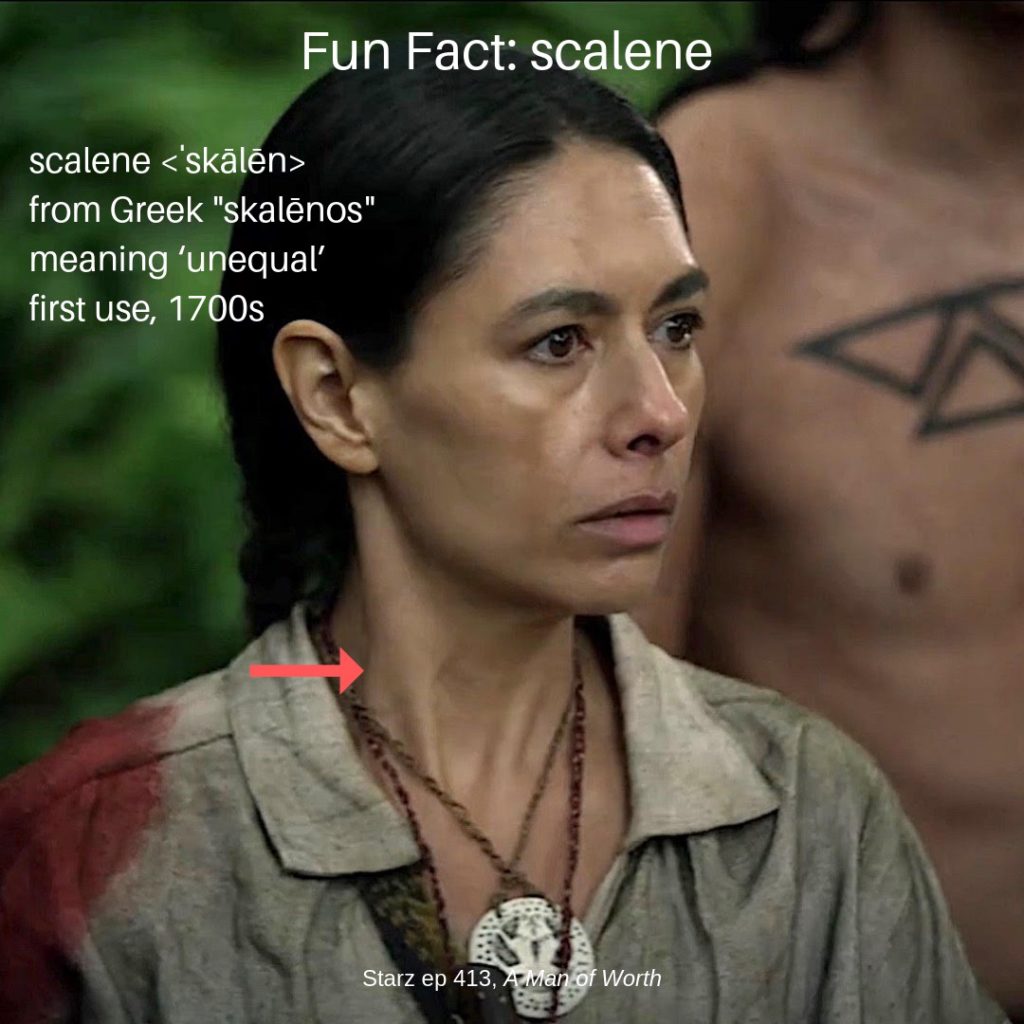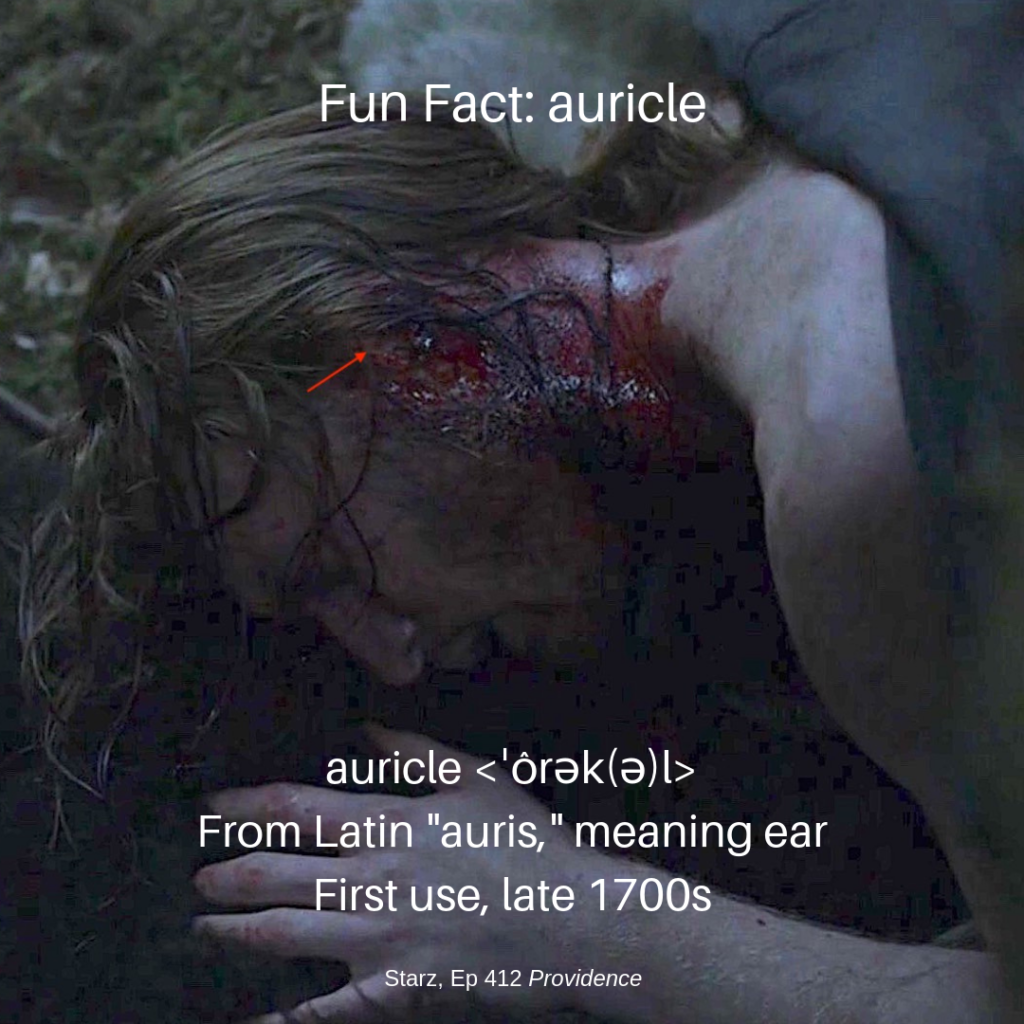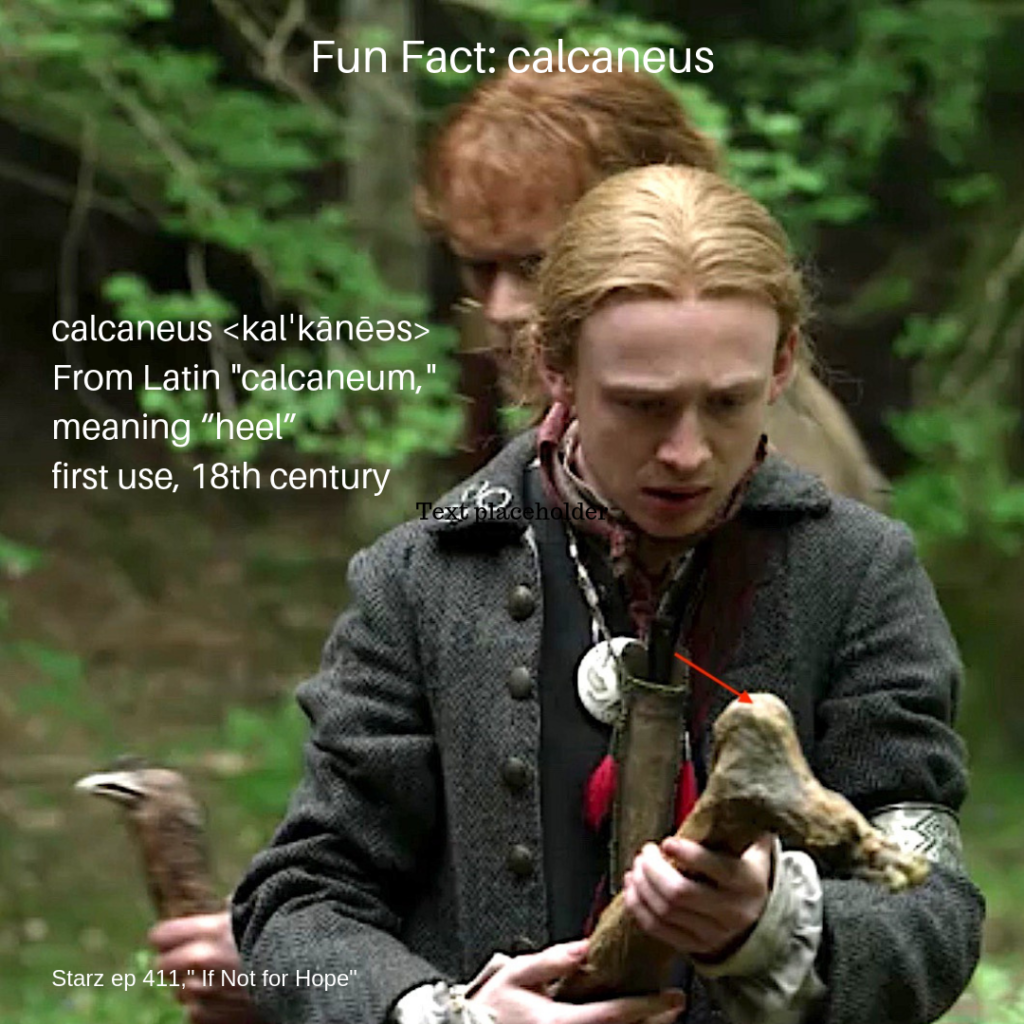
Anatomy Def: The scalene are three muscles of each side of the neck: anterior, middle and posterior scalenes.
Outlander Def: Neck muscles grip at the sight of a stone long dispatched to a galaxy far, far way away! How did it get around Claire’s neck?
Learn about the scalene muscles in Anatomy Lesson #12, “Claire’s Neck” or “The Ivory Tower.”
In Greek, scalene means “uneven” because each muscle is different in length. Anterior and middle scalene muscles lift the first rib and tilt the head to the same side. Posterior scalene lifts the second rib and tilts the head to the same side. Ergo, right scalenes tilt head to the right – left scalenes, to the left. Scalenes are classified as (secondary) muscles of respiration because lifting the ribs expands the rib cage.
The artery (subclavian) and nerves (brachial plexus) to the upper limb pass between anterior and middle scalene muscles. Muscular compression of these structures can contribute to thoracic outlet syndrome, wherein the sufferer experiences some combination of pain, tingling, weakness, paleness, and/or coldness of the upper limb.
Also, the scalene area may be targeted for regional anesthesia. A nerve block to this area is the interscalene block and may be performed prior to arm or shoulder surgery
Read about the neck in Drums of Autumn. Herself describes loads of neck stuff therein. Jamie’s teeth are mighty close to the scalene muscles in this, ahem, yummy scenario:
“He narrowed one eye and squinted dubiously at me. Then he reached up, took me delicately by the ear, and drew my head down, turning my face to the side. He flicked his tongue gently at the base of my throat, then lifted his head and set his teeth very softly in the tender flesh at the side of my neck.”
See Wahkatiiosta’s right anterior scalene muscle (red arrow) as she recognizes Otter Tooth’s necklace in Starz ep 413, A Man of Worth! Her anterior scalene is clearly visible because her neck is lean with little subcutaneous adipose (fat) tissue.
A deeply grateful,
Outlander Anatomist
Photo credit: Starz


